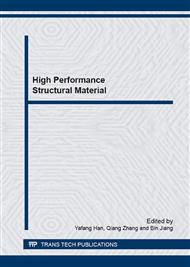p.620
p.628
p.634
p.641
p.648
p.655
p.662
p.671
p.676
Study on Hot Deformation Behavior of Cast-and-Homogenized Superalloy GH706
Abstract:
Hot deformation behavior of cast-and-homogenized GH706-ingot material was studied in this work. Isothermal uniaxial compression tests were performed at temperatures (°C): 990, 1020, 1050, 1080 and 1100 with strain rates (s-1): 0.01, 0.1 and 1. The stress-strain curves as well as changes in microstructures of various hot deformed specimens were analyzed. Inhomogeneous microstructures were found in the specimens and the flow curves were resulted from the comprehensive functions of microstructures change in all part of the specimens. The constitutive relationship of alloy GH706 has been established by linear regression analysis of the experimental data taken from the Arrhenius equations as a model. Then hot compression tests were carried out to estimate the allowable reductions, and 52.5% and 50.6% are suggested as the allowable reductions during cogging processing of GH706 alloy in each blow at 1110°C and 1130°C.
Info:
Periodical:
Pages:
648-654
Citation:
Online since:
April 2015
Authors:
Price:
Сopyright:
© 2015 Trans Tech Publications Ltd. All Rights Reserved
Share:
Citation:


